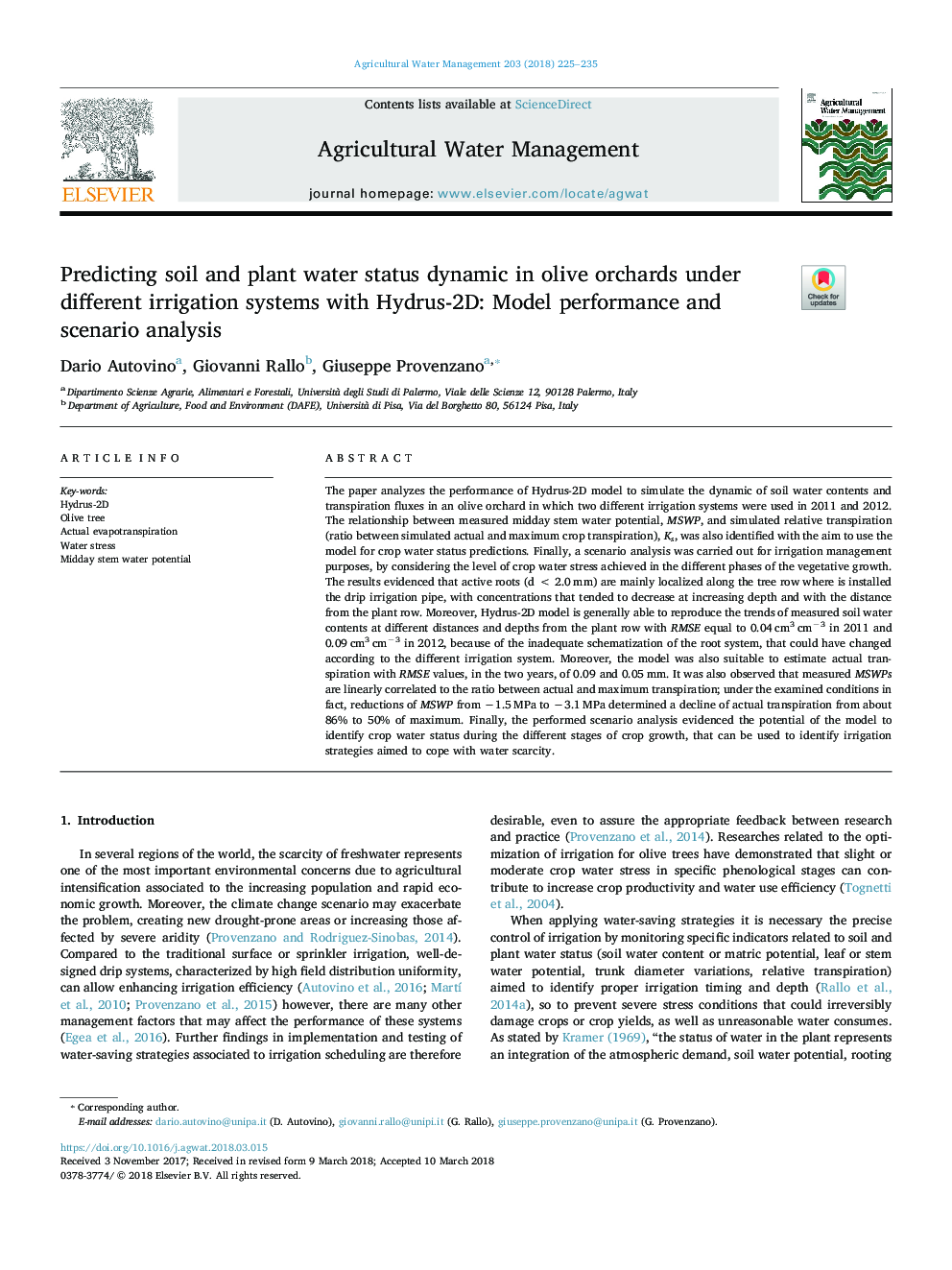| کد مقاله | کد نشریه | سال انتشار | مقاله انگلیسی | نسخه تمام متن |
|---|---|---|---|---|
| 8872955 | 1622877 | 2018 | 11 صفحه PDF | دانلود رایگان |
عنوان انگلیسی مقاله ISI
Predicting soil and plant water status dynamic in olive orchards under different irrigation systems with Hydrus-2D: Model performance and scenario analysis
دانلود مقاله + سفارش ترجمه
دانلود مقاله ISI انگلیسی
رایگان برای ایرانیان
کلمات کلیدی
موضوعات مرتبط
علوم زیستی و بیوفناوری
علوم کشاورزی و بیولوژیک
علوم زراعت و اصلاح نباتات
پیش نمایش صفحه اول مقاله

چکیده انگلیسی
The paper analyzes the performance of Hydrus-2D model to simulate the dynamic of soil water contents and transpiration fluxes in an olive orchard in which two different irrigation systems were used in 2011 and 2012. The relationship between measured midday stem water potential, MSWP, and simulated relative transpiration (ratio between simulated actual and maximum crop transpiration), Ks, was also identified with the aim to use the model for crop water status predictions. Finally, a scenario analysis was carried out for irrigation management purposes, by considering the level of crop water stress achieved in the different phases of the vegetative growth. The results evidenced that active roots (dâ¯<â¯2.0â¯mm) are mainly localized along the tree row where is installed the drip irrigation pipe, with concentrations that tended to decrease at increasing depth and with the distance from the plant row. Moreover, Hydrus-2D model is generally able to reproduce the trends of measured soil water contents at different distances and depths from the plant row with RMSE equal to 0.04â¯cm3â¯cmâ3 in 2011 and 0.09â¯cm3â¯cmâ3 in 2012, because of the inadequate schematization of the root system, that could have changed according to the different irrigation system. Moreover, the model was also suitable to estimate actual transpiration with RMSE values, in the two years, of 0.09 and 0.05â¯mm. It was also observed that measured MSWPs are linearly correlated to the ratio between actual and maximum transpiration; under the examined conditions in fact, reductions of MSWP from â1.5â¯MPa to â3.1â¯MPa determined a decline of actual transpiration from about 86% to 50% of maximum. Finally, the performed scenario analysis evidenced the potential of the model to identify crop water status during the different stages of crop growth, that can be used to identify irrigation strategies aimed to cope with water scarcity.
ناشر
Database: Elsevier - ScienceDirect (ساینس دایرکت)
Journal: Agricultural Water Management - Volume 203, 30 April 2018, Pages 225-235
Journal: Agricultural Water Management - Volume 203, 30 April 2018, Pages 225-235
نویسندگان
Dario Autovino, Giovanni Rallo, Giuseppe Provenzano,